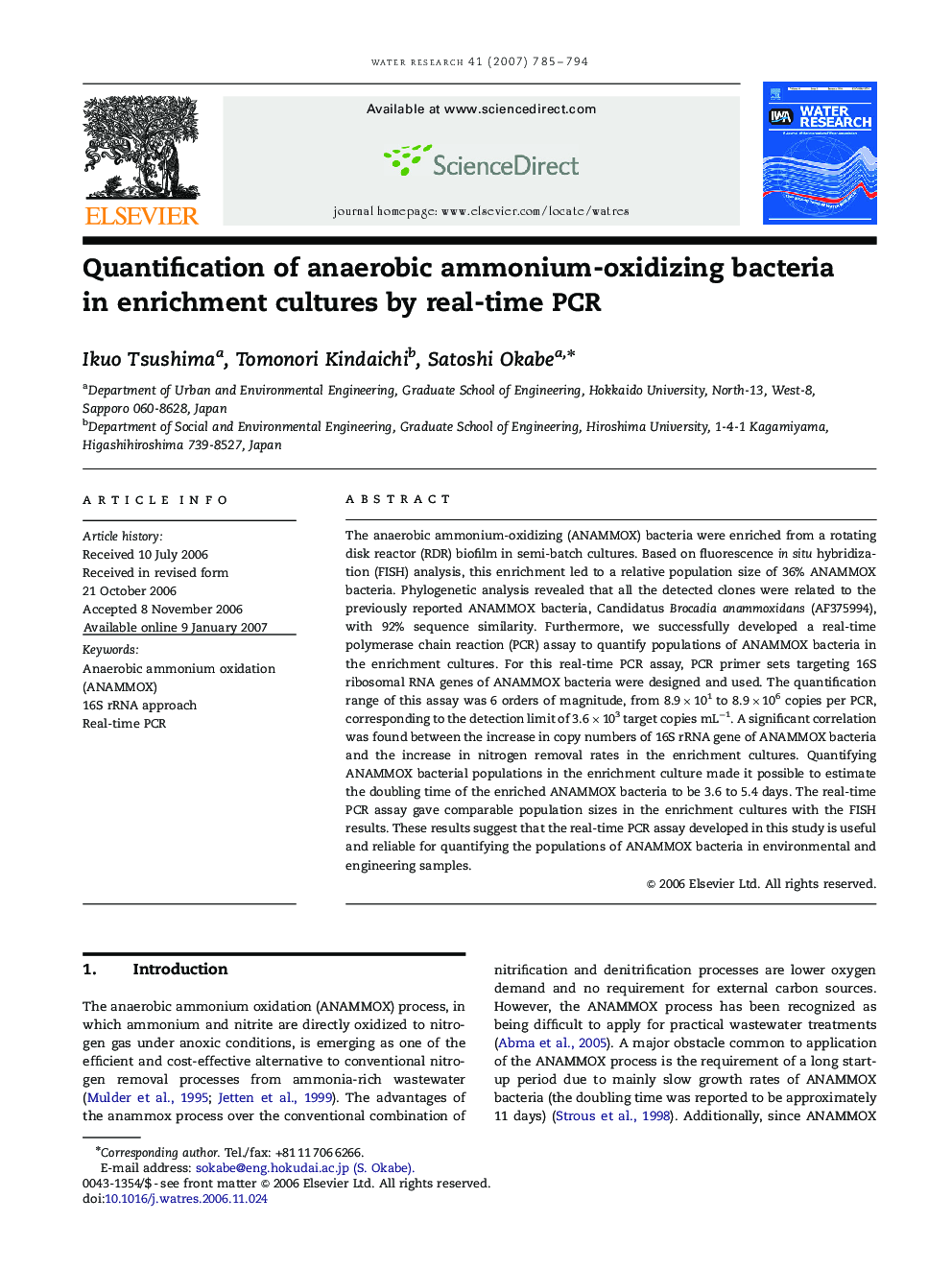| Article ID | Journal | Published Year | Pages | File Type |
|---|---|---|---|---|
| 4485537 | Water Research | 2007 | 10 Pages |
The anaerobic ammonium-oxidizing (ANAMMOX) bacteria were enriched from a rotating disk reactor (RDR) biofilm in semi-batch cultures. Based on fluorescence in situ hybridization (FISH) analysis, this enrichment led to a relative population size of 36% ANAMMOX bacteria. Phylogenetic analysis revealed that all the detected clones were related to the previously reported ANAMMOX bacteria, Candidatus Brocadia anammoxidans (AF375994), with 92% sequence similarity. Furthermore, we successfully developed a real-time polymerase chain reaction (PCR) assay to quantify populations of ANAMMOX bacteria in the enrichment cultures. For this real-time PCR assay, PCR primer sets targeting 16S ribosomal RNA genes of ANAMMOX bacteria were designed and used. The quantification range of this assay was 6 orders of magnitude, from 8.9×101 to 8.9×106 copies per PCR, corresponding to the detection limit of 3.6×103 target copies mL−1. A significant correlation was found between the increase in copy numbers of 16S rRNA gene of ANAMMOX bacteria and the increase in nitrogen removal rates in the enrichment cultures. Quantifying ANAMMOX bacterial populations in the enrichment culture made it possible to estimate the doubling time of the enriched ANAMMOX bacteria to be 3.6 to 5.4 days. The real-time PCR assay gave comparable population sizes in the enrichment cultures with the FISH results. These results suggest that the real-time PCR assay developed in this study is useful and reliable for quantifying the populations of ANAMMOX bacteria in environmental and engineering samples.
